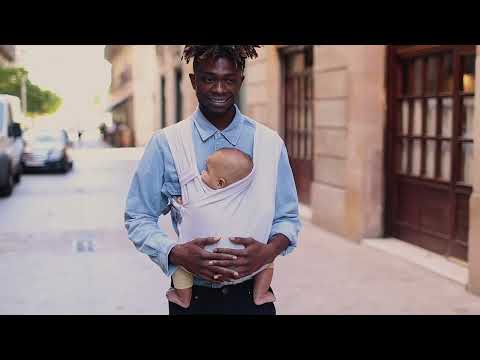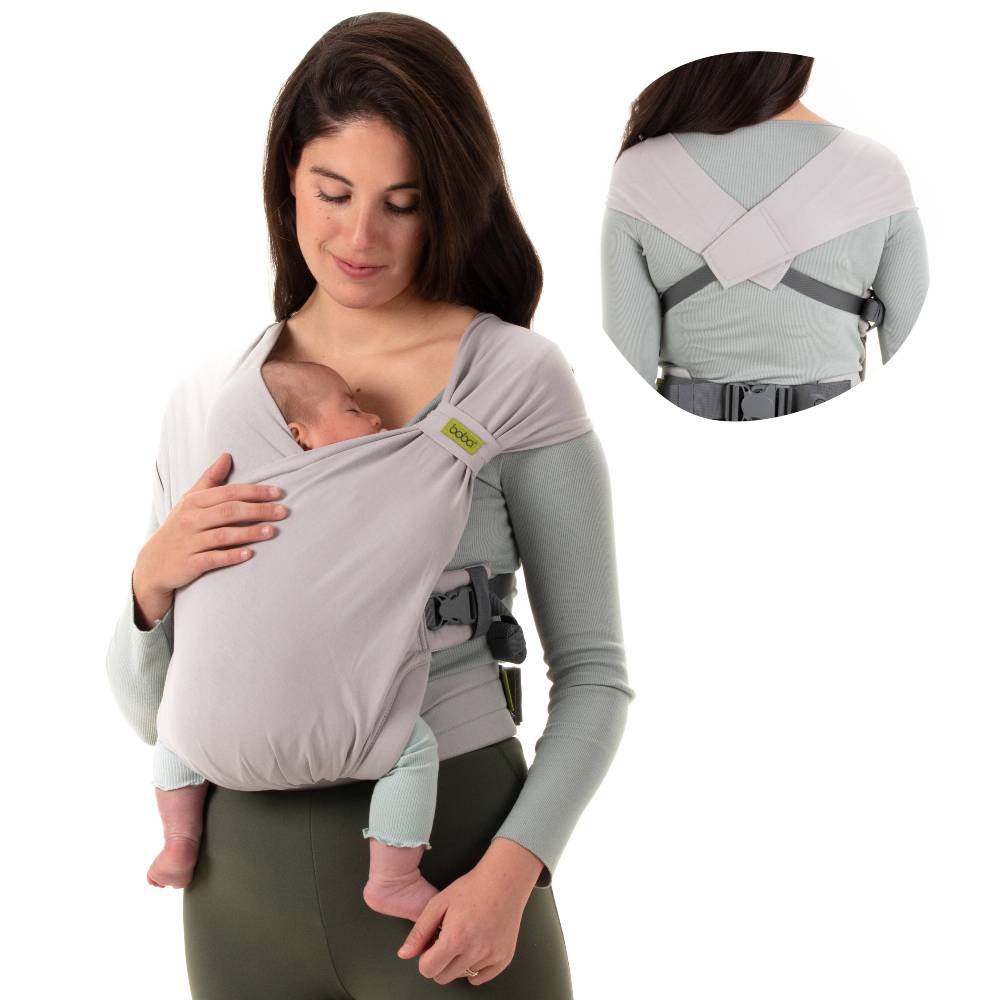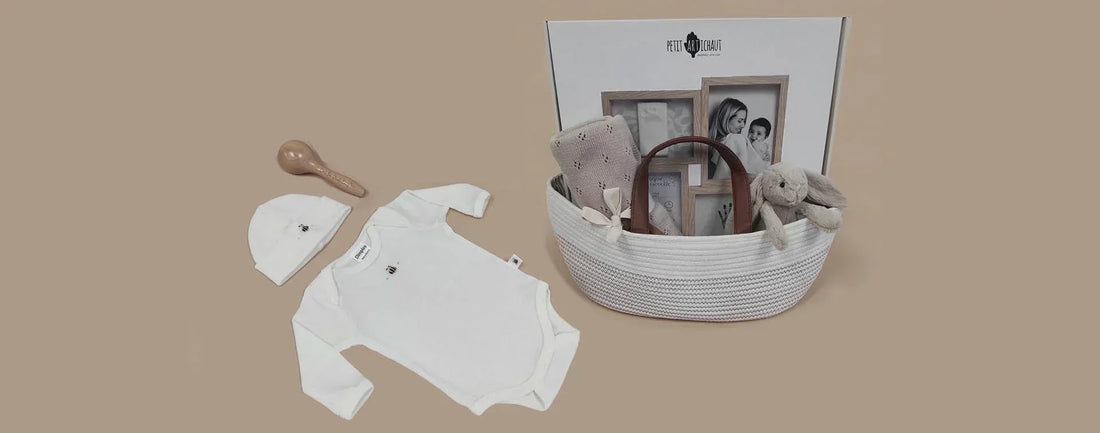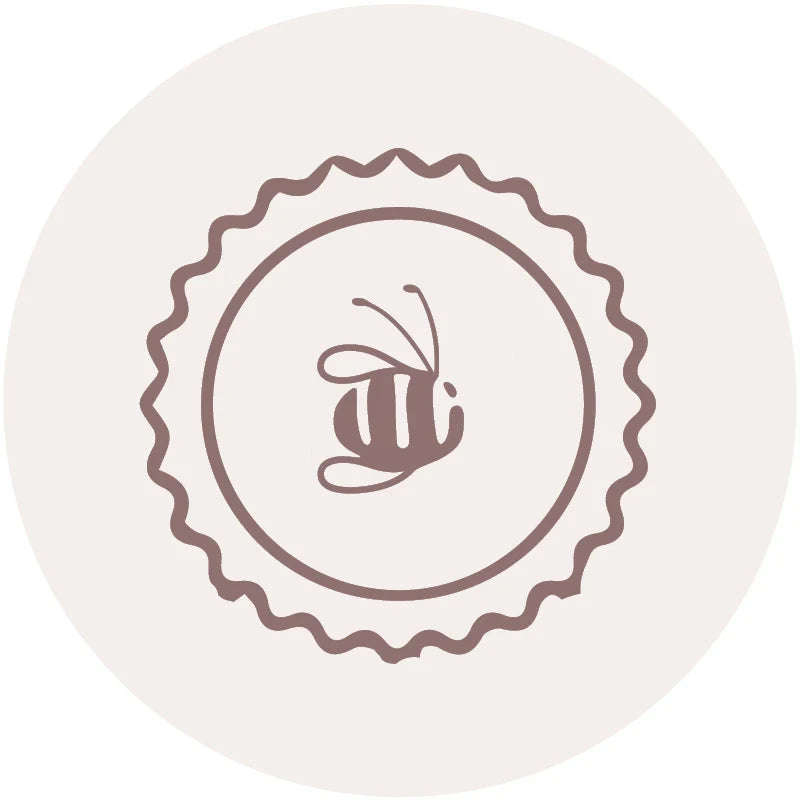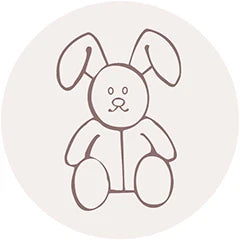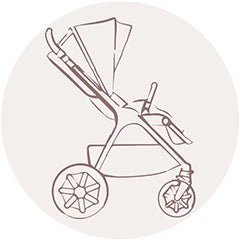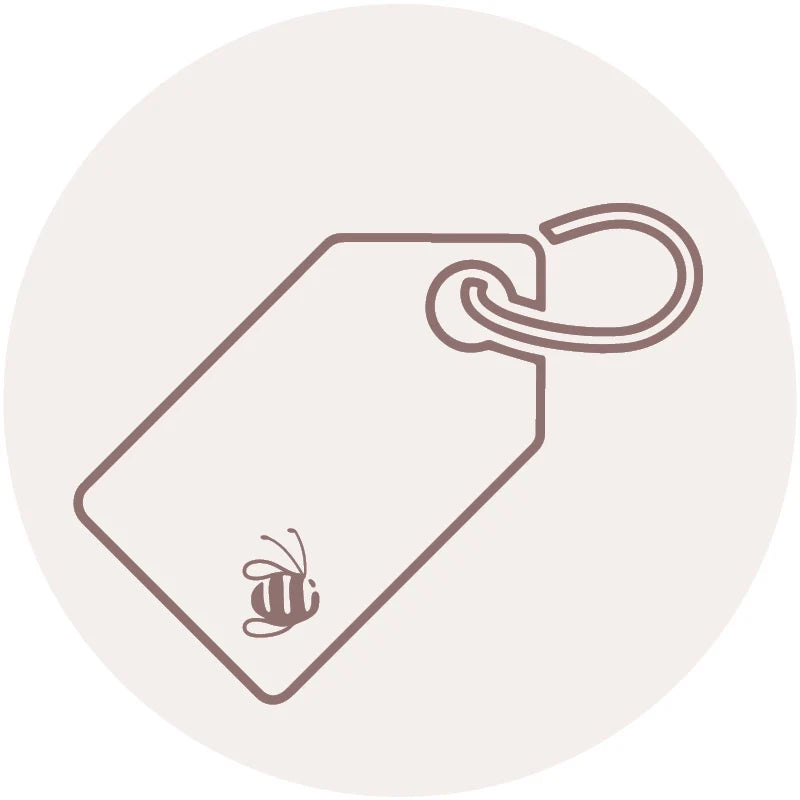Boba Bliss Baby Wrap Carrier V2
Boba Bliss Baby Wrap Carrier V2
SKU:B5-BLISS-G
Clothing Prem to 18 Months
| Size | Age Guide | Weight | Height |
|---|---|---|---|
| Premature | Premature or Small Newborn | Up to 4Kg | Up to 55cm |
| Newborn | 0-3 months | 4-6Kg | Up to 62cm |
| 3 Month | 3-6 months | 6-8Kg | Up to 68cm |
| 6 Month | 6-12 Month | 8-10Kg | Up to 76cm |
| 12 Month | 12-18 Month | 10-12Kg | Up to 84cm |
| 18 Month | 18-24 Month | 12-14Kg | Up to 92cm |
Clothing 2 to 6 Years
| Size | Age Guide | Height | Chest | Waist | Hip |
|---|---|---|---|---|---|
| 2 Year | 2-3 Years | Up to 100 cm | 56 | 51 | 58 |
| 3 Year | 3-4 Years | Up to 105 cm | 58 | 53 | 60 |
| 4 Year | 4-5 Years | Up to 110 cm | 60 | 55 | 62 |
| 5 Year | 5-6 Years | Up to 115 cm | 62 | 57 | 64 |
| 6 Year | 6-7 Years | Up to 120 cm | 64 | 59 | 66 |
Beanie Size Guide
| Size | Head Circumference | Age Guide |
|---|---|---|
| Premature | 31-35 cm | Premature or Small Newborn |
| Newborn | 35-40 cm | Newborn |
| Small | 40-43 cm | 3-6 Months |
| Medium | 43-47 cm | 6-18 Months |
| Large | 47-52 cm | 18-3 Years |
Sunhat Size Guide
| Size | Head Circumference | Age Guide |
|---|---|---|
| Newborn | 37-40 cm | Newborn |
| Small | 40-43 cm | 3-6 Months |
| Medium | 43-46 cm | 6-12 Months |
| Large | 46-49 cm | 12-24 Months |
| Xtra Large | 49-54 cm | 2-4 Years |
Sleep Pods Size Guide
| Size | Weight | Age Guide | Measurement(Back to Hem) |
|---|---|---|---|
| Newborn | 0-6 kgs | 0-3 Months | 60.5 cm |
| Small | 0-8 kgs | 3-6 Months | 66 cm |
Booties Size Guide
| Size | Age Guide |
|---|---|
| Newborn | 0-3 Months |
| Small | 3-6 Months |
| Medium | 6-12 Months |
| Large | 12-18 Months |
Pretty Brave Baby
| Foot Length (mm) | Insole Length (mm) | EU | UK | Age | INT |
|---|---|---|---|---|---|
| 95-104 | 110 | 16/17 | 2 | 0-6m | S |
| 104-114 | 118 | 18 | 3 | 6-12m | M |
| 114-123 | 127 | 19/20 | 4.5 | 12-18m | L |
| 123-137 | 142 | 21/22 | 5.5 | 16-22m | XL |
Pretty Brave 1st Walker
| Foot Length (mm) | Insole Length (mm) | EU | UK | Age |
|---|---|---|---|---|
| 114-120 | 125-128 | 19 | 3 | 1 yr |
| 120-126 | 132-135 | 20 | 3.5 | 1-2 yrs |
| 126-132 | 138.5-141.5 | 21 | 4.5 | 1-2 yrs |
| 132-138 | 145-148.5 | 22 | 5 | 2 yrs |
Crywolf Swim Nappy
| Size | Length (waist to crotch) | Crotch Width (side to side) |
|---|---|---|
| 0-1 yr | 1-2 yrs | |
| 37 | 38 | |
| 14.5 | 15.5 |
Crywolf Rash Suit
| Size | Length (back neck to crotch) | Chest (arm to arm) | Waist (side to side) | Sleeve (neck to cuff) | Neck Opening(diameter) |
|---|---|---|---|---|---|
| 6-12 Months | 1 yr | 2 yrs | 3 yrs | ||
| 40 | 42 | 44 | 46 | ||
| 25 | 26 | 27 | 28 | ||
| 24 | 25 | 26 | 27 | ||
| 30 | 31.5 | 33 | 34.5 | ||
| 13.25 | 13.25 | 13.8 | 14.3 |
In stock
Couldn't load pickup availability
Overview
Overview
The Boba Bliss is the ultimate combination of comfort, convenience, and closeness - bringing together the best features of both a buckle carrier and a baby wrap in one!
This carrier is sure to become your new favourite. With its simple buckle and go system, it’s easy to use, yet it still gives you all the snuggly comfort and connection of the best selling Boba wrap. Made from a soft, stretchy, and durable cotton blend knit fabric, the Boba Bliss keeps you and your little one cozy and secure.
The updated Boba Bliss V2 has been refined with you in mind! Based on valuable feedback, the buckles on the back have been removed for an even more comfortable, adjustable fit - making it easier for all parents to wear. It’s the same beloved Boba Bliss, just made simpler and more intuitive for everyday use!
Perfect for babies from birth to around 12 months (3.2kg to 16kg), the Boba Bliss is a one size fits most carrier that adapts to your body and your baby’s shape. Whether you're petite or plus-size, it creates a custom fit every time. The special fabric molds to your body and your baby, providing support, flexibility, and that all important closeness.
Certified hip healthy by the International Hip Dysplasia Institute, the Boba Bliss is designed to be a soothing, comfortable experience for both you and your baby. Get ready for the most snuggly, effortless carrying experience. Your little one will love the closeness, and you’ll love the freedom!
Key Features
Key Features
Technical Specification
Technical Specification
Delivery and Returns
Delivery and Returns
- Delivery: Free within NZ on orders over $100 (excluding bulky items) or $8 standard shipping
- Returns: Accepted within 14 days of receipt with proof of purchase
- Some items are excluded from returns including sale items, hardware, car seats, prams, monitors and personal items - please click here for the full list.
Share this product
Recently Viewed Products
Related Blogs
Choosing the right baby carrier
Here’s everything you need to know about baby carriers Becoming a new parent comes with an overwhelming number of unanswered questions – one of which is how to choose the right baby carrier. Keeping your little bundle of joy close to you while running errands, visiting the grandparents or doing chores around the house might seem like a far-fetched idea at first, but with a baby carrier, you don’t have to choose between doing one or the other. There is a huge selection of baby carriers to choose from – everything from smaller models best suited to newborn babies through to adaptable carriers which can be used even into the toddler years. With so many options, it can make deciding on which one to buy a little daunting – especially if you’re a first-time parent. Let’s take a look at different styles of carriers, as well as a few tips for how to pick the right one for you and your baby. Types of baby carriers Ring slings Ring slings are a well-known and versatile style of baby carrier. They’re made from a length of fabric threaded through two rings. Ring slings are worn on one shoulder, spreading widely across your back to create a pouch for baby to sit in. With some models, extra shoulder padding can be added for long-term wearing. Because a ring sling offers a variety of different carrying positions, it can be used from newborn through to toddlerhood. For young babies, it supports the ‘C-shape’ curve they’re born with. Once the sling has been adjusted to fit you and bubs, it’s a simple matter of popping baby in and out. Ring slings are a great introductory carrier for new parents because they’re easy to use and can be stored in your nappy bag. Soft-structured carriers This style of carrier is a favourite with parents because of how easy it is to use and adjust. The basic design is a front panel where baby will be ‘seated’, a waist strap and two padded shoulder straps – all of which can be adjusted and secured with buckles to achieve a comfortable fit. Soft-structured carriers can be used for front, hip and back carrying, from newborns to toddlers. They carry your baby in an ergonomic upright position (rather than a hammock or cradle position), evenly distributing his weight over both your shoulders. Many have additional head support for younger babies or integrated infant boosters which can be easily removed as your baby grows – like this Nuna Cudl Carrier. They’re not quite as snuggly as wraps and can take time to work out the most comfortable position, but they’re super-quick to pop on and provide fantastic support for long-term wearing. Wrap slings or carriers A wrap – like this Aura Baby Wrap – is one of the most comfortable baby carriers to wear. For young babies, the swaddle-like design mimics the feel of the womb. The design consists of a long piece of specially-woven fabric that is wrapped, tied and moulded to your body and baby. You can use it in lots of different styles – front, side or back, on one shoulder or two. Some wrap snugly around your chest to distribute weight and others are more like a backpack. Most will fit all sizes, shapes and ages of babes. You’ll need to learn how to wrap, but with a little practice and patience, you’ll have it mastered in no time. Tips for choosing a baby carrier Baby carriers come in a wide variety of styles and features. Whatever carrier you choose, follow the usage instructions and safety advice in the manual, and always monitor baby when in the carrier to ensure proper airflow is maintained. When shopping for a baby carrier, here are some things you should consider: Longevity As your baby grows, your carrier will need changing features. Newborns like to snuggle in close with their head on your chest; toddlers want to see the world! Most carriers come with generous age and size ranges but it's essential to choose a carrier designed to fit your baby's size and age. Some parents opt for two carriers and others look for an alternative that can adjust to different ages. Fit and comfort One of the most important factors of a baby carrier is how well it fits. You want one that fits your newborn well and supports her safely. This means you’ll need to factor in weight, height, physiology and build. It should also be comfortable for both you and your baby. The seat of any carrier should allow your baby’s legs to be in the hip-healthy ‘M’ position. For you, think about how much back and shoulder support you’ll need for long-term wearing comfort. Most carriers are one-size-fits-most, can be easily adjusted and shared between parents. Other options come in different size ranges. Ease of use Regardless of what type of carrier you buy, it may take a little practice before using one becomes second nature. Some carriers require a multi-step process to get set up but can be easily stored in a nappy bag. Others may be easier to use but bulkier to transport. Easy to clean If you didn’t already know – babies are messy! Not all carriers can be machine-washed for easy cleaning – some need to be hand-washed or dry-cleaned. Be sure to check labels for washing instructions. Climate While physical contact is great for a boost of oxytocin (the love hormone) and bonding, all carriers will add heat. For warmer climates, lightweight and breathable fabrics are essential. For colder climates, heavier materials and padding are more appropriate. Organic and eco-friendly For those parents and babies with sensitive skin, or anyone looking for an eco-friendly carrier option, consider carriers with organic fabrics, colour grown cotton, unbleached fabrics, recycled materials, and non-toxic dyeing processes. Pick what’s right for you and your family Baby carriers are a great alternative to lugging a stroller in and out of your boot and navigating crowds. They’ve been shown to help promote bonding, improve postpartum depression and anxiety, and reduce crying. But ultimately, the perfect carrier for you and your bouncing baby is the style that you both find most comfortable. All carriers provide exactly what your baby is looking for – being close to you. Look at your budget, lifestyle, and who will be using the carrier to help you decide which styles to consider.
Learn moreBaby Comforters: What Are They, and How To Introduce Them
There’s something very special about watching your baby snuggle into their favourite little blanket or soft toy. For many little ones, a comforter (or blankie) becomes more than just a bedtime accessory - it’s a trusted friend that brings a sense of calm and reassurance through every new stage of growing up.
Learn moreNewborns & Sleep: What to Expect and Survival Tips
Bringing a new baby home is one of life’s most beautiful - and exhausting - adventures. In this blog, Family Sleep & Wellness Coach, Lauren Moran from Little Dreamers, shares her expert advice on newborn sleep in the fourth trimester.
Learn moreYour Wishlist, Made Easy
Creating a gift registry takes the guesswork out of gifting for you and your loved ones. While the journey of pregnancy can come with plenty of challenges, ticking off your shopping list doesn't need to be one of them.
Learn more






